Help! The Dark Side of the Forgotten Beatles Album
The true story of Help! is one of excess, lost identities, and a band caught between creative risk and commercial success.
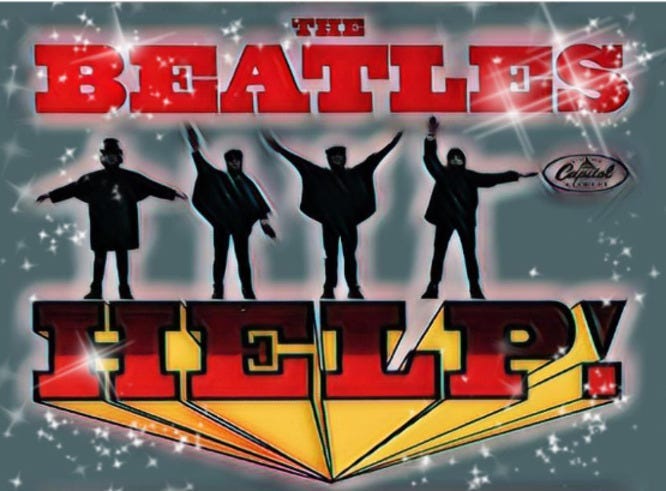
2025 marks the 60th anniversary of the Beatles’ single Ticket to Ride, a cornerstone of their pre-Rubber Soul era. Just four months later, Help!, their fifth album and the soundtrack to their second film, was released.
If we look through the haze surrounding this often-overlooked album and era, it becomes clear: Help! isn’t just a soundtrack, but the score to a real-life drama of excess, lost identity, and a band caught between creative risk and the pressure to deliver hits for a major film.
Behind the lighthearted caricatures on screen, in reality, it was one of John Lennon’s darkest hours as a Beatle.
And it began with a year no one could have predicted.
(This is one half of a two-part analysis of Help! written in collaboration with Alex Markham. See the link at the end of this article.)
Ed Sullivan to exhaustion
1964 was an intense year for the Beatles, from their debut appearance on The Ed Sullivan Show to their exhausting filming schedule for A Hard Day’s Night, and it didn’t stop there. Within weeks, they were on their first American tour, recording Beatles for Sale, and embarking on yet another UK tour.
At the end of 1964, having toured the globe, they entered a relentless schedule that tested their creativity and put pressure on their personal lives.
In February 1965, The Beatles were filming their second movie and recording their fifth album with hardly a break. More impressive than their pace was the new music, including what would become their most covered pop song ever. They showed no signs of burnout when recording Help!
And with a Ticket to Ride, their music headed in a daring new direction.
The earliest heavy metal record
On February 15, 1965, The Beatles entered EMI’s studios for the first session of the New Year, laying down the tracks for a song John would later describe as “one of the earliest heavy-metal records made.”
According to Paul, the song started merely as a “work song that turned out well.” The truth is, it didn’t just turn out well; it was essential in pushing The Beatles’ pop-oriented arrangements forward.
Driven by Ringo’s off-kilter beat, John’s biting guitar riff, and a dynamic song structure, it quickly became a staple of live shows. It bridged their earlier pop sound with darker moods and bolder arrangements. Lennon sang more aggressively, Ringo hit harder, the harmonies soared higher, and George’s guitar cut through with a new intensity.

Music critic Joshua Rifkin noted that Ticket to Ride hinted at the more complex song arrangements that would follow, especially in Strawberry Fields Forever, stating that the tune and The Beatles “revolutionized the very molecular structure of pop music…”
John Lennon summed it up a bit more bluntly:
“Ticket To Ride was slightly a new sound at the time. It was pretty f*****g heavy for then, if you go and look in the charts for what other music people were making. It’s a heavy record and the drums are heavy too.”
Despite topping the charts, there was no time to celebrate. Filming for Help! was underway, the album was unfinished, and Lennon, already weary, was growing more jaded by the day.
John Lennon’s cry for help
Filming for Help!, initially titled Eight Arms to Hold You, began in the Bahamas. Although the band had just released one of their most energetic songs yet, they were growing increasingly exhausted, both physically and mentally.
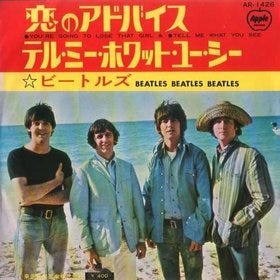
This time, buoyed by A Hard Day’s Night’s massive success and the resulting bigger budget, they aimed to enjoy themselves. Filming became as much a vacation as their tight schedule (and what they could get away with) allowed.
When it comes to the finished film, Alex Markham writes, “Help! was the Beatles’ formula on overdrive,” and unlike A Hard Day’s Night, it only “had a plot of sorts.” But Markham also reveals something many fans may have missed:
“The inspirations for the film passed over the head of the eight-year-old me, but I now know they were The Marx Brothers and The Goons, as well as being a comical satire on James Bond.”

However, one on-set pastime that heavily influenced the upcoming album deserves mention.
During filming, John, Paul, George, and Ringo indulged heavily in their new favorite pastime: smoking pot. They forgot lines, botched takes, and often broke into spontaneous laughter. Yet director Richard Lester wasn’t concerned, later recalling, “There was no harm in it then. It was a happy high.”
Despite the endless rounds of joints, McCartney still found time to work on a song that would become one of history’s most famous. Meanwhile, the world was closing in on John, fame’s weight growing heavier by the day.
The weight of the world
This haze of exhaustion and substance use deeply affected Lennon’s state of mind, as he later recalled in 1980:
“The Beatles thing had just gone beyond comprehension. We were smoking marijuana for breakfast. We were well into marijuana and nobody could communicate with us, because we were just all glazed eyes, giggling all the time. In our own world.”
“It was my fat Elvis period. You see the movie: He — I — is very fat, very insecure, and he’s completely lost himself. And I am singing about when I was so much younger and all the rest, looking back at how easy it was. Now I may be very positive. But I also go through deep depressions where I would like to jump out the window..Anyway, I was fat and depressed, and I was crying out for help.”
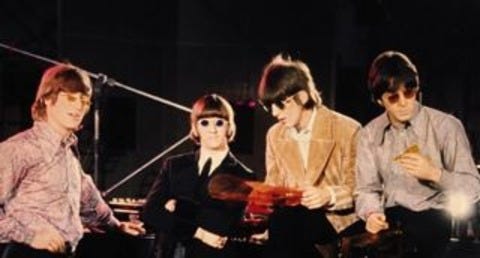
Maureen Cleave’s 1966 profile in the Evening Standard (the same one that sparked the “more popular than Jesus” controversy) only deepened John’s insecurities. She described him as “always tired,” “unwell,” and noted, “He is fat and lazy and his hair is a mess.” Though she never called him “The Fat Beatle,” the label stuck in his mind. Obsessed with his weight for the rest of his life, Lennon channeled that anxiety into Help!, a song that became less a title track and more of a subconscious therapy session.
Hidden beneath its upbeat sound, Help! was more personal than even Lennon realized, a turning point without which Rubber Soul may never have happened.
So, how did Help! become The Beatles’ forgotten album?
Escaping Beatles’ purgatory
Note: I focus on the full-length UK release of Help!, not the U.S. soundtrack, which included only seven of the album’s fourteen tracks.
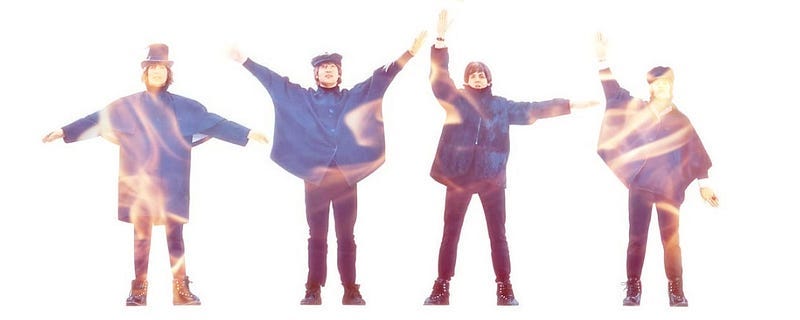
While Rubber Soul is often viewed as The Beatles’ pot album, it was during Help! cannabis first began to change their perception of what pop music could be and how it could be created.
Despite its milestones, Help! remains overlooked for two key reasons:
The U.S. release diluted Help! by including just seven Beatles songs and five orchestral fillers. The UK version, by contrast, was a full studio album — the true follow-up to Beatles for Sale.
Help! carries artistic tension, ambitious but uneven. It remains in Beatles purgatory: overlooked by casual fans, and often dismissed even by diehards, overshadowed by what came next.
Ironically, it’s those uneven risks, sometimes ahead of their time, that make it one of The Beatles’ most misunderstood albums. The songwriting breaks new ground, and the production adds a distinctive sheen and sound, making the album stand apart in their discography.
So why does Help! sound different from A Hard Day’s Night or Beatles for Sale?
The electric piano makes a fresh, prominent appearance on several tracks.
Paul takes lead guitar on several songs, a move that matters more than it seems.
The group incorporated strings and even a flute solo.
The vocals are double-tracked, as usual, but mixed unusually loudly.
The pacing lacks the cohesion of A Hard Day’s Night.
The fragmented track listing explains why fans know the hits but are unfamiliar with the deeper cuts, buried between Ticket to Ride, and Yesterday.
But once the album tracks of Help! are rediscovered and heard with fresh ears, you’ll never experience the album the same way again.
Beyond the singles, Lennon finds his true voice
The album opens with the powerful title track, followed by The Night Before, a straightforward, if somewhat formulaic, rocker by Paul. The energy maintains the momentum, but it does not reach the excitement of the opener. Still, Paul’s vocals show growth, adding a rougher, grittier edge he employs on rockers like I’m Down.
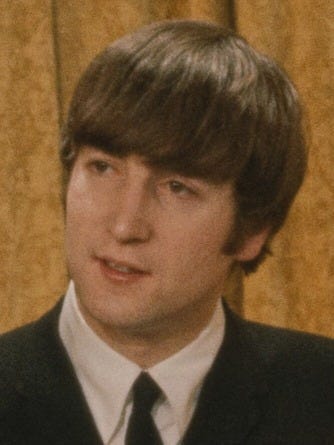
However, the underappreciated You’ve Got To Hide Your Love Away takes the first significant artistic twist of the album.
John’s acoustic ballad brings personal lyrics to life by incorporating a variety of new sounds and subtle nuances. Ringo swaps drumsticks for snare brushes, while Paul’s bass stays silent until midway, then enters with chordal lines that fill the low end without overwhelming the mix. A flute solo from left field closes the tune, perfectly tying everything together.
Still, it’s John’s voice that stands out most. He called it his “Dylan era,” and while the “Hey!” chorus is undeniably a nod to Dylan, it feels more like a clever hook than a direct imitation.
Dylan influenced Lennon, sure, but contrary to critics, it’s hardly outright mimicry, vocally or lyrically.
It’s the start of John experimenting with vocal techniques that would define his unmistakable style on classics like A Day in the Life and Across the Universe.
He explores phrasing, syncopation, and stretched syllables. He leans into his distinct nasal rasp. He also uses falsetto far more than on previous records. Rather than being his “Dylan-era,” it’s Lennon’s “vocal-era,” shaping his vocal identity and making it a crucial turning point, often unnoticed.
John the drummer
I Need You, George’s second songwriting credit, best illustrates the unusual sound of the album, subtly hidden in the mix.
George overdubbed a volume pedal guitar part, but the effect falters because Ringo isn’t behind the kit. Tapping an acoustic guitar instead, John handled the snare, and Lennon’s dragging tempo threw off even Paul’s usually steady bass.
Also, Harrison’s loud double-tracked vocals drown out the harmonies, especially in the stereo mix, while the mono version softens the impact.
It’s quirks like these that make Help! unlike anything else in The Beatles’ catalog.
I Need You’s instrumentation is just one experiment they wouldn’t repeat. Next, Paul steps into lead guitar on Another Girl. Packed with one-off licks and a country twang. As he interjects his riffing between vocal lines, it’s more distracting than compelling.

This technique was also shelved, except on two album standouts, most notably You’re Going to Lose That Girl.
The Lennon-led You’re Going to Lose That Girl captures everything that made The Beatles great. It plays like a tribute to the girl groups they admired, perhaps even a nod to Please Mr. Postman.
Ringo’s bongos add urgency to Lennon’s lyrics, accompanied by tight call-and-response harmonies.
The song’s key change during the bridge, E major to G major, intensifies the defiant tone.
The theme from She Loves You is revisited, but this time the narrator warns, “If you don’t treat her right, you’re going to find her gone.”
It’s easy to see how It’s Only Love, You Like Me Too Much, Tell Me What You See, and I’ve Just Seen a Face fade into the background after the immediate impact of Help!, You’ve Got to Hide Your Love Away, Ticket to Ride, You’re Going to Lose That Girl, and Yesterday.
These tunes may not match the strength of the hits, but that’s why Help! is compelling.
Rubber Soul Part I?
It captures a fly-on-the-wall glimpse of a band in transition. They’re refining their sound, tightening their songwriting, and creeping into new musical territory. The groundwork for Rubber Soul is evident throughout Help!
Paul’s Tell Me What You See foreshadows I’m Looking Through You, while I’ve Just Seen a Face, a lively acoustic track, hints at the folk-rock style that would define Rubber Soul and serves as the opening track on the American release.
Ringo’s cover of Act Naturally on Help! continues his love for country music, which the band further developed with What Goes On, one of the few songs he co-wrote with Lennon-McCartney.
But Help! is not merely Rubber Soul Part One. It stands on its own, featuring moments as legendary as any in their career.
Yesterday, the record’s biggest departure, tastefully integrated strings into rock ’n’ roll, without the syrupy, overly commercial feel of many 1950s ballads. It proved artists could maintain their integrity while using nontraditional instrumentation. This daring experiment gave bands like The Rolling Stones “permission” to confidently follow suit and re-release As Tears Go By months later.
Help! still shines on
Despite the pressures and struggles of the mid-1960s, John found his way forward through music. More than just an album, Help! was a cry hidden in plain sight, a search for direction, and a creative reset.
Maybe Help! was never truly forgotten, just overshadowed. Give it another listen, and you’ll hear the moments that signaled the Beatles’ transformation.
If the music captures The Beatles opening a new chapter, then Alex Markham’s companion piece to this article, “Help: The Lighter Side of a Film and a Journey,” brings the film’s history into focus, as Alex takes us along the London streets where Help! was filmed. He blends original photos with personal reflections, resulting in a thoughtful tribute that brings the lighter side of The Beatles’ journey to life.
As always, thanks for reading.
-Daniel






Nice commentary on a wonderful album.